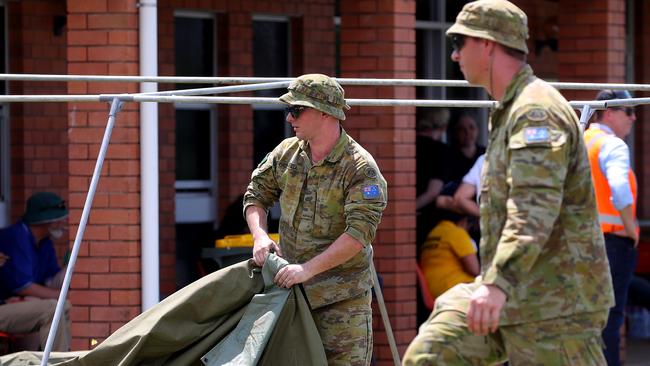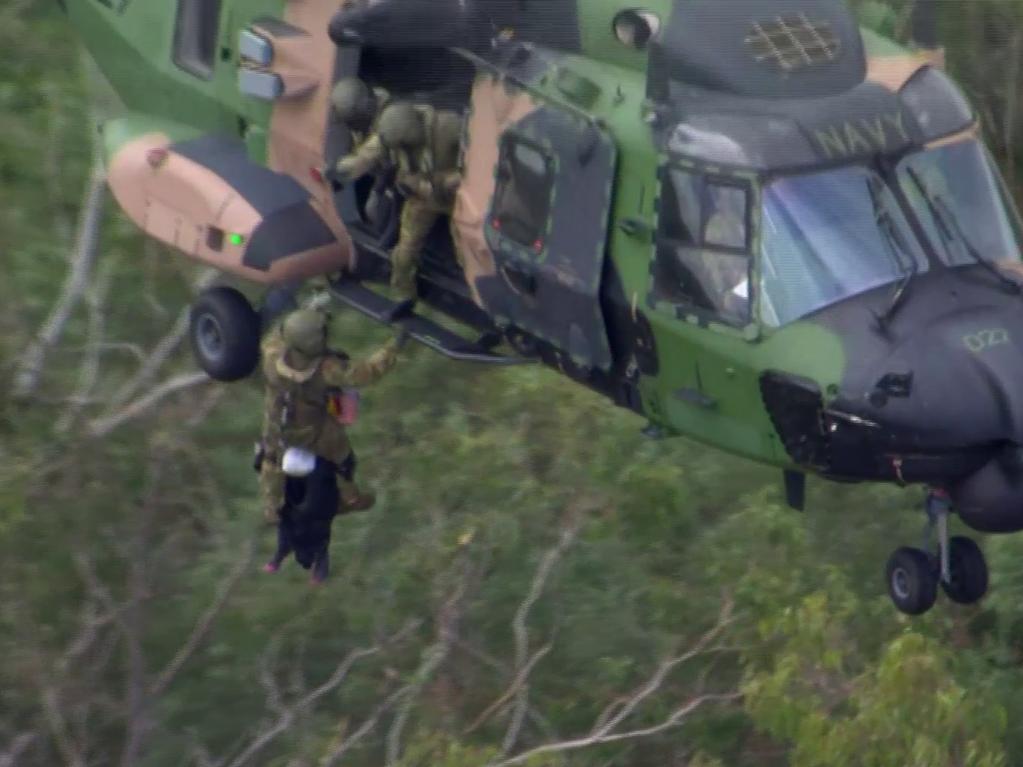We depend on ADF in a crisis, but for how much longer?

On Saturday, it was announced in Lismore that the federal and NSW governments have plans to deploy 5000 Australian Defence Force personnel, with 900 headed for northern NSW.
As a former soldier, I know full well our defence force members will always be ready and willing to help out at home. They are all members of our communities.
The 2019-20 Black Summer bushfires saw the largest deployment of ADF personnel since Vietnam.
And a large response was also recently sent over to assist our Pacific neighbours in Tonga after a deadly volcanic eruption and subsequent tsunami in January.
Now, the ADF has once again been deployed to assist communities – this time in New South Wales and Queensland, which are in the grip of terrifying floods.
What we are now witnessing is the ADF being called out regularly because of the increasing frequency and severity of the extreme weather events Australians are facing as a result of our changing climate. This will eventually reduce the ADF’s capacity for military operations.
The world is becoming more and more insecure, with Russia’s recent invasion of Ukraine and the inevitable increase in environmental damage from this war. Australia needs the ADF to be ready to act in its primary role. The ADF will always be willing and able to contribute at home, but what is a reasonable level?
With the release of the UN’s latest global climate science report last week, it is clear we need to seriously evaluate if the ADF is up to this almost constant demand for defence aid to the civilian community. As the Intergovernmental Panel on Climate Change warned, climate-driven extreme events like floods, cyclones and bushfires here in Australia will only become more intense and occur more often as we continue to burn fossil fuels.
The large number of community assistance deployments is starting to impact the training schedules of our defence force. This can be especially dangerous for some specialists required to maintain very high combat skill levels – such as pilots: although civilian assistance tasks are often challenging, they are not as difficult as combat training.
I was in charge of deployments in the Blue Mountains and southern Sydney fires in 1993-94, putting communication teams and water tankers in to support local communities and firefighters there. That was before the “hardening” of the army.
The ADF has been “hardened” to fight in operations such as those experienced in Iraq and Afghanistan. The most telling experience of this was when my home area of Conjola on the NSW south coast was hit by the Black Summer bushfires. A group of soldiers arrived in an armoured Bushmaster vehicle, designed to transport up to 10 soldiers on a battlefield, but the group was unable to carry building equipment, shift rubble and recover household and farm items. The soldiers were fantastic but they didn’t always have the right equipment. Another group had been deployed with a truck. Soldiers and trucks really worked. Army engineers with trucks and chainsaws were also fantastic.
So what is the solution to this potentially serious security issue? First and foremost, we must cut the problem at its source and get emissions down globally this decade. This will ensure we have fewer disasters our ADF needs to respond to on home soil, as well as abroad.
We need the federal government to invest in preparation and planning, as well as implement the recommendations of the bushfires royal commission and other inquiries. Local government areas also need more resources to assist communities now.
There is an old army saying: “There are never enough engineers.” That applies here. There needs to be an increase in ADF engineering capability to handle the extreme weather events we are experiencing now.
Throughout my career, whenever the government indicated an increase in budget, immediately it sprang to the obvious war-fighting equipment, not engineering capability. Now it needs to be a top priority.
The federal government cannot continue to keep asking our ADF to assist and simply hope for the best. Very soon, that will not cut it. At some point in the future, the system will break, as global temperatures rise. In fact, the conditions that led to the Black Summer bushfires could be considered normal as soon as 2040.
Let’s not forget that the ADF is there to help, and will help, however and wherever its members are directed. But the federal government must plan ahead for the future. We must reset now for the sake of our national security, and the safety of our communities.
Major General Peter Dunn is a former senior officer in the Australian Army, former commissioner for the Australian Capital Territory’s Emergency Services Authority and founding member of Emergency Leaders for Climate Action. He was co-ordinator of the community-led recovery effort in the Conjola area of NSW after his town was hit during the Black Summer fires, and then by floods a month later.






The Australian Defence Force is deployed during times of disaster and hardship. When homes are swept away, or when we are surrounded by flames.